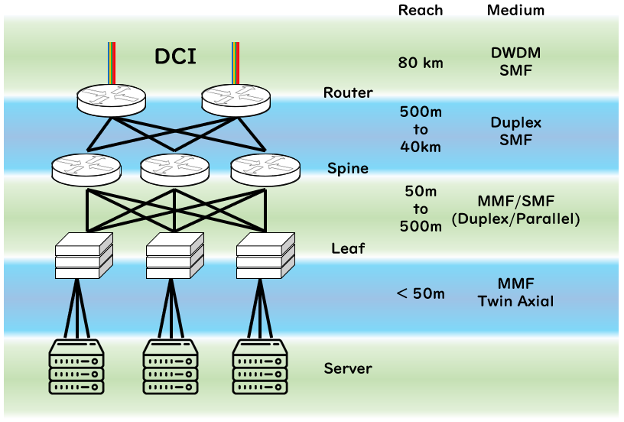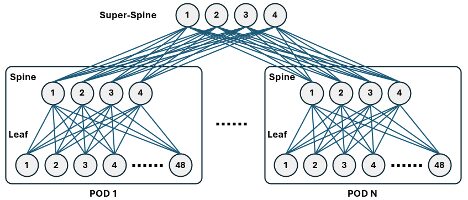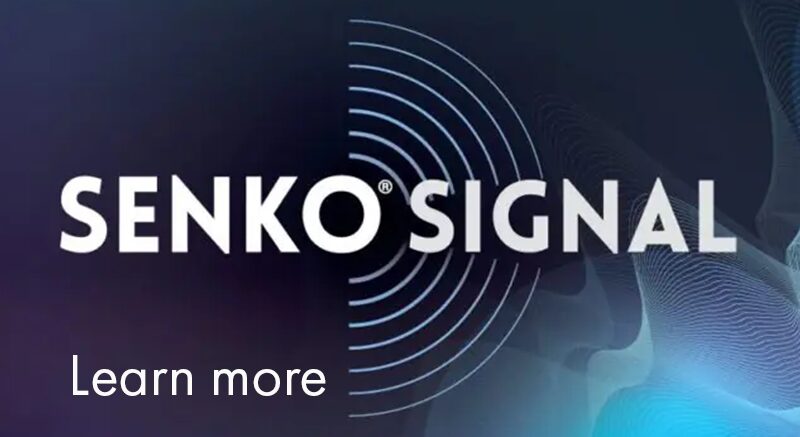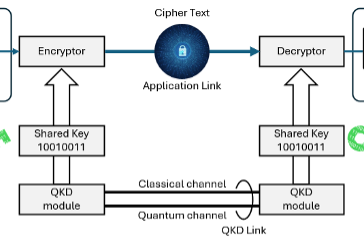了解数据中心中的全网状叶刺架构
导言
数据中心是现代计算的支柱,为托管应用程序、存储数据和支持网络服务提供所需的基础设施。数据中心最有效的网络拓扑结构之一是全网状叶刺架构。这种设计解决了传统架构的局限性,确保了高可用性、低延迟和可扩展性。在本文中,我们将深入探讨全网状叶刺架构的组件、优势和注意事项。
什么是叶脊结构?
叶刺架构是一种网络拓扑结构,旨在优化数据中心的连接。它主要由两层组成:
- 叶层:叶交换机是架构的接入层。它们直接连接数据中心内的服务器、存储设备和其他设备。叶子交换机负责将流量转发到骨干层。
- 脊柱层:骨干交换机是架构的主干。它们连接所有叶子交换机,促进它们之间的通信。骨干层不直接连接任何终端设备,但确保所有叶子交换机都能相互通信。
全网格拓扑
在完全网状的叶子-骨干架构中,每个叶子交换机都连接到每个骨干交换机。这种设计为数据流量提供了多条路径,最大限度地降低了拥塞和单点故障的风险。全网状拓扑与部分网状设计不同,在部分网状设计中,某些交换机可能不相互连接。

全网状叶片和脊柱结构的主要特点
- 高可用性:叶交换机和骨干交换机之间的多重连接可确保在一条链路出现故障时,流量可通过备用路径重新路由。这种冗余增强了网络的可靠性和正常运行时间。
- 低延迟:有了多条可用路径,数据包就可以在设备之间选择最短的路径,从而减少延迟。这对于实时分析和视频流等对延迟敏感的应用尤为重要。
- 可扩展性:在架构中添加更多服务器或交换机非常简单。无需重新配置整个网络即可添加新的叶交换机,现有的骨干交换机可以处理增加的流量,而不会降低性能。
- 负载平衡:全网状架构中的多路径可实现高效的负载平衡。流量可以分配到不同的路径,从而优化资源利用率,防止任何单一交换机成为瓶颈。
- 简化管理:叶刺架构由于其结构可预测,因此更易于管理。网络管理员可以独立监控和配置每一层,便于故障排除和性能优化。
实施全网状叶刺结构的注意事项
虽然全网状叶刺架构的优势非常显著,但在实施过程中必须考虑几个因素:
- 费用:与传统拓扑结构相比,全网状架构需要更多的交换机和互连设备,因此初期资本支出较高。不过,性能和可靠性方面的长期优势可能会抵消这些成本。
- 物理空间:数据中心必须有足够的空间容纳完全网状拓扑结构所需的额外交换机和布线。必须为未来的增长做好规划,以避免受到限制。
- 配置的复杂性:虽然架构简单明了,但配置和管理大量交换机可能非常复杂。适当的工具和软件是有效管理的必要条件。
- 带宽要求:随着数据流量的不断增长,确保脊柱交换机有足够的带宽来处理负载至关重要。这通常需要使用高速互连,如 40G 或 100G 以太网。
超级脊柱网络
在超大规模数据中心等更大范围内,超级脊柱网络可以扩展脊叶架构的优势,以满足下一代数据中心和云环境的需求。这种网络是脊柱层之上的一个附加层。它连接多个脊叶 "pod"(较小的脊叶网络集群),通过在更大规模的部署或地理位置分散的数据中心中实现多个脊叶层的互联,从而提高可扩展性。
由于超级脊柱网络可以大大提高服务器之间的连接性,因此对超高密度光纤电缆、连接器和配线架的要求也随之提高。SN-MT 连接器就是专为满足这些要求而设计的。

结语
全网状叶刺架构是现代数据中心网络的强大解决方案,具有高可用性、低延迟和可扩展性。其设计可实现高效的负载平衡并简化管理,对于希望优化基础架构的企业来说是一个极具吸引力的选择。虽然必须考虑成本和复杂性等因素,但这种架构的优势使其成为当代数据中心环境的主要选择。随着数据需求的不断增长,全网状叶脉架构将在实现高效、可靠和可扩展的网络解决方案方面发挥至关重要的作用。


